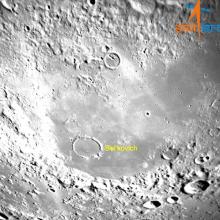Listen to today's episode of StarDate on the web the same day it airs in high-quality streaming audio without any extra ads or announcements. Choose a $8 one-month pass, or listen every day for a year for just $30.
You are here
Falling into Place
To make a planet that’s comfortable for life, a lot of things have to fall into place. The planet has to orbit the right kind of star. It has to orbit at the right distance. It has to be made of the right materials. And the list goes on and on.
One factor may be whether a planet has plate tectonics, with slabs of its crust moving around and over each other. On Earth, the motions of the crust help regulate temperatures. Volcanoes belch carbon dioxide, which helps keep the air warm. But the plates also help bury carbon dioxide in Earth’s interior, keeping the air from getting too warm.
It may also help if a planet has a moon — especially one as big as Earth’s. Our moon helps keep Earth stable as it orbits the Sun. It also creates the tides, which are a big factor in sustaining life.
Another factor may be how close the planet’s birthplace was to a recently exploded supernova. The massive stars that become one type of supernova create a lot of heavy elements. Those elements are needed to make the rocky planets like Earth that are the most likely homes for life. When the star explodes, it blasts these elements into space. They “seed” nearby stellar nurseries, providing the ingredients for planets and life.
As astronomers discover more planets in other star systems, scientists are adding to the list of conditions. So we’re likely to find that many more things have to fall into place to make a planet comfortable.
Script by Damond Benningfield





